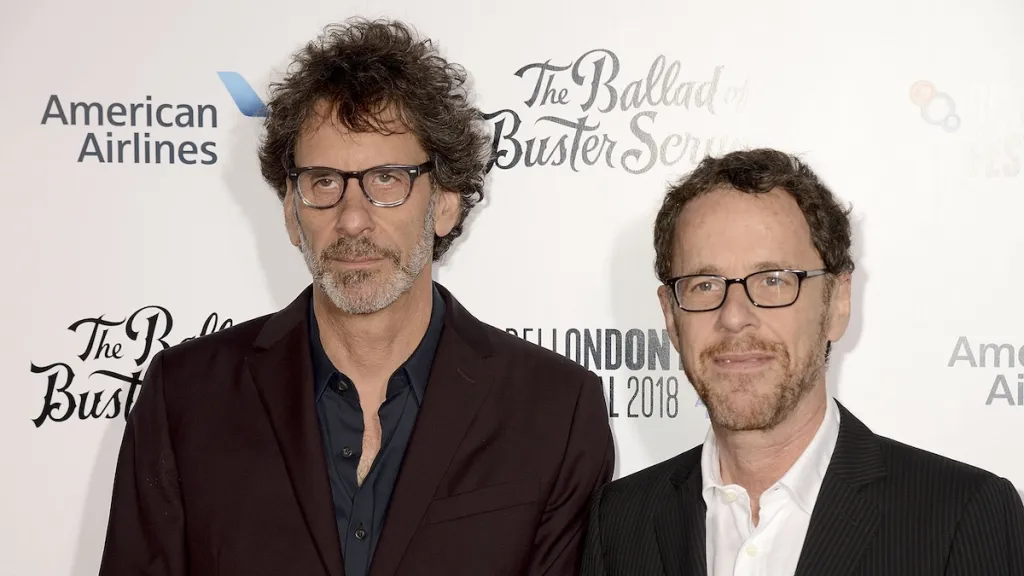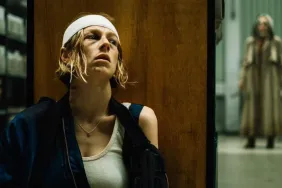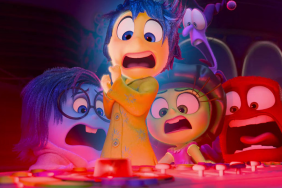It’s always exciting when a new film is released by the Coen Brothers. The dynamic duo has produced some of cinema’s most outstanding motion pictures, including No Country for Old Men, Fargo, The Big Lebowski, and Raising Arizona.
This week sees the release of Drive-Away Dolls, the first film Ethan has written (alongside Tricia Cooke) without his brother. While it remains to be seen if one Coen can produce the same magic as two, Drive-Away Dolls will likely go down as one of the year’s best and is obviously worth checking out with a crowd in the theater.
To commemorate the occasion, I typically single out the top five films from a director/actor’s body of work. For the Coen’s, however, that exercise only partially honors their achievements. So, I decided to single out the best scenes in each of their pictures—no small feat considering their vast portfolio.
So, sit back, pour yourself a White Russian, and dive into the world of Joel and Ethan Coen.
Blood Simple (1984) — Ray Buries Marty
Can you believe I only recently saw Blood Simple for the first time a few years ago? This impeccably well-made thriller is the closest the Coen’s have come to crafting out-and-out horror. Some scenes stick with you long after the credits role, most of them involving M. Emmet Walsh’s cackling private detective who is hired to murder the wife (Frances McDormand) and lover (John Getz) of a jealous Texas bar owner (Dan Hedaya). Naturally, the situation spirals out of control, leading to twists and misunderstandings between everyone involved with deadly consequences.
The scene that stuck with me from Blood Simple was the bit where Ray (Getz) buries Marty (Hedaya) alive after discovering his corpse in a bar. At first, Ray assumes Abby (McDormand) murdered Marty, prompting him to clean up her mess. However, when he drives to the middle of a field at night, he discovers that Marty is still alive and proceeds to carry out the dastardly deed anyway. The sequence is incredibly dark and undeniably terrifying, particularly when Marty starts screaming under piles of dirt. Good luck shaking this one from your nightmares!
Raising Arizona (1987) — Diaper Run
Boy, this one was tough. Raising Arizona, the comedy classic about a couple who kidnaps a baby, features an abundance of memorable scenes. Notably, the bit in which H.I. (Nicolas Cage) finds himself neck-deep in toddler mayhem when performing the robbery, or the scene in which smooth-talking furniture owner Nathan Arizona (Trey Wilson) has a run-in with the FBI that leads to him ruining his prized jacket, any scene with Randall Craig Cobb’s violent country hunter Leonard Smalls (he delights in shooting small critters), and a hilarious bank sequence featuring John Goodman and William Forsythe as a pair of down-on-their-luck robbers (“Well, which is it young fella? Do you want us to freeze or get down on the ground?”)
Still, nothing tops the great diaper chase, during which H.I. robs a convenience store (with an empty gun, no less), an act that pisses off his police officer wife, Ed (Holly Hunter). Delightfully absurd, the extended action beat demonstrates the Coen’s unique brand of comedy and will either leave you in stitches or completely bewildered.
Miller’s Crossing (1990) — Forest Scene
For their third film, the Coens dove head-first into this violent prohibition-era drama about warring mobsters (Albert Finney and Jon Polito) and a well-meaning advisor, Tom Reagan (Gabriel Byrne), playing both sides in an effort to keep the peace.
Stylish, evocative, and packed with fascinating thematic layers, Miller’s Crossing fits nicely alongside films such as Baton Fink and A Serious Man—surreal offerings packed with symbolism, unique characters, crazy twists, and shocking violence. Somehow, no one talks about Miller’s Crossing nearly enough.
Anyways, my favorite scene has always been the bit where the Dane (a ferocious J.E. Freeman) walks Tom out to the forest to locate the corpse of Bernie (John Turturro) and prove his loyalty. Tom is aware that they won’t be able to locate Bernie as he had released him when the latter had begged for mercy. Tom realizes that he is walking towards his own death. Byrne does an excellent job of portraying Tom’s increasing terror, resulting in a gripping cinematic experience. NOTE: I couldn’t find the whole scene on YouTube, but here’s the first part.
Barton Fink — Hallway Confrontation
I’ll admit I don’t fully understand Barton Fink. It’s a little too weird for my tastes and remains the least-watched Coen Bros. flick in my household. It may be one I need to reevaluate at a certain point, but for now, it stands alongside Inside Llewyn Davis, Hail, Caesar, and The Ladykillers as an obscure entry in their otherwise unblemished oeuvre.
Still, I remember the scene where Madman Mundy pursues a pair of detectives down a hallway bursting with flames. It’s downright terrifying, and a terrific example of the Coen’s mastery over sight and sound.
The Hudsucker Proxy (1994) — Hula Hoop Montage
Stylish to a fault, this madcap homage to the slapstick comedies of the 1930s and 40s remains the costliest flop from the Coen brothers, earning a putrid $11M against a $25M budget. Admittedly, it took a few tries for me to fully understand what the duo was going for. Here, we have a rags-to-riches-to-rags comedy centered around business and economics about a hapless man (Tim Robbins) who receives, achieves, and nearly botches his chance at fame. It’s a delightfully quirky film with terrific performances, but the style and zany tone get a little tiresome after a while.
No matter, there’s plenty here to admire, including a magnificent montage during which Robbins’ big idea: a hula hoop. You know, for kids! Set to Carter Burwell’s amazing score, this sequence neatly captures the essence of business and remains one of Coen’s most delightfully eccentric sequences.
Fargo (1996) — The Wood Chipper
Fargo is an all-timer, a dark crime drama featuring unique characters, astonishing acting, superb writing, and enough thematic material to write a bookshelf worth of analysis. Essentially, it all boils down to good people doing bad things for money, but there’s so much more lingering at the heart of this fantastic motion picture. Is it the best film of the 1990s? Maybe.
For those unaware, the story follows used car salesman Jerry Lundegaard (William H. Macy) and his attempt to attain money from his father-in-law by hiring a pair of criminals (Steve Buscemi and Peter Stormare) to kidnap his wife. As in Blood Simple, a series of unfortunate events, misunderstandings, and poor decisions causes events to spiral out of control, resulting in unnecessary violence and death, all set in the cold (but comfy) confines of rural North Dakota.
While ostensibly a comedy with characters who talk funny, Fargo isn’t afraid to go to really dark places. Notably, in the film’s most shocking moment, France McDormand’s pregnant police officer stumbles upon a darkly humorous, albeit grisly, scene involving a wood chipper. The rest is history.
The Big Lebowski (1997) — Dream Sequence
Following Fargo’s stunning critical and commercial success, the Coens defied expectations and produced perhaps their greatest comedic achievement, The Big Lebowski. Again, it took me a few tries to fully embrace The Dude (Jeff Bridges), but once I got the joke and the carefully crafted subtext, everything clicked, and Lebowski became one of my favorite films.
Inspired by the works of Raymond Chandler, this wannabe, hard-boiled detective story finds a stoner bowler engulfed in a kidnapping scheme that threatens to upend his carefree ways. Together with his pal Walter (John Goodman in top form) and Donny (Steve Buscemi), The Dude sets off to solve the mystery, mostly so he can A) get his soiled rug replaced and B) return to his life of bowling and weed.
The Coen’s sprinkle abundant slapstick throughout the production but coat the whole enterprise with surprising depth. The Dude abides, particularly during a madcap dream sequence filled with bowling balls, Saddam Hussein and Julianne Moore in a sexy Vikings outfit. What’s not to love?
O Brother, Where Art Thou (2000) — A Man of Constant Sorrow
The Coens dipped their toes in musical waters beginning with 2000’s delightful O Brother, Where Art Thou, another visually impressive blend of screwball comedy and deeper themes about life. In this case, a trio of criminals (George Clooney, Tim Blake Nelson, John Turturro) break out of jail and engage in an odyssey to recover money. Loosely based on Homer’s The Odyssey, our boys encounter a one-eyed, cyclops-like villain (John Goodman), deadly sirens, and all matters of religious symbolism en route to fulfilling their quest.
Surprisingly, they also become music stars thanks to a hit single recorded to earn some cash. Their immense success sets up the film’s best sequence when the “Soggy Bottom Boys” unveil their talents in front of a raucous public for the first time.
The Man Who Wasn’t There (2001)
Another stylish crime drama punctuated by moments of dark humor, The Man Who Wasn’t There uses a star-studded cast—namely Billy Bob Thornton, Frances McDormand, Scarlett Johansson, Tony Shalhoub, and James Gandolfini—to tell its story about a chain-smoking barber who tries to get money for a dry cleaning business by threatening his wife’s boss and lover. Things don’t go as planned.
Filmed in striking black and white, the movie honors old detective movie styles in its looks and the themes it explores. It gives a new perspective on the genre while staying true to its origins. The movie surprises viewers with the sudden appearance of a UFO, making the story more surreal and adding an unexpected twist to the otherwise straightforward plot.
Intolerable Cruelty (2003)
The Coens take their talents to the courtroom scene for this goofy battle of the sexes starring an in-their-prime George Clooney and Catherine Zeta-Jones. It’s not the sharpest comedy in the Coens’ oeuvre, but Intolerable Cruelty is a lot of fun, and the duo have a blast with the legal terminology and set up several terrific set pieces that allow the leads to chew on delectable dialogue.
Ultimately, Intolerable Cruelty comfortably slides alongside Burn After Reading and Raising Arizona as a charming comedy designed to make you laugh more than think. Everyone here is on their A-game, making it an exemplary rom-com to enjoy on a Saturday evening—also, shoutout to the always-amazing Richard Jenkins.
My favorite sequence in the film remains the big courtroom case, if only due to the Judge’s very relaxed decorum. Though, I’m also partial to the clip below:
The Ladykillers (2004) — Music Scene
Considering the talent involved, it’s a wonder The Ladykillers, a remake of the 1955 film starring Alec Guinness, falls as flat as it does. Tom Hanks swings for the fences as Professor G.H. Dorr, but his performance grows tiresome real quick, while a cast of talented supporting players, including Marlon Wayans, Irma P. Hall, J.K. Simmons, Tza Ma, and Stephen Root, never live up to the billing. It’s not outright terrible, but The Ladykillers is certainly a blemish on the Coens’ portfolio.
Of course, with all that star pedigree, you’re bound to find something good to cling to. In this case, a bit in which Hall’s religious-loving Marva heads downstairs and finds our main players pretending to practice a gospel song. Of course, they’re really tunneling through Marva’s basement to steal money from a casino, but she doesn’t know that. The old woman’s angry outburst towards Wayans’ foul-mouthed Gawain really sells the bit.
No Country for Old Men (2007) — Hotel Confrontation
My favorite Coen Brothers film, No Country for Old Men, marks the pair’s first straight-up adaptation, and by Hell if it isn’t the most gripping crime drama you ever did see. Josh Brolin (in a career-best performance) stars as Llewlyn Moss, an old-school cowboy who catches the attention of dangerous hitman Anton Chigurh (a perfectly cast Javier Bardem) after he snatches money from a drug deal gone wrong. Tommy Lee Jones co-stars as a sheriff observing these dark times from afar.
No Country tackles everything from ethics, fate and chance, power and control, law and order, and existentialism, using stunning visuals, sharp dialogue, and incredible acting to drive its points home. The results are a thought-provoking masterpiece that resonates with audiences on a visceral and intellectual level.
So, which scene is the best? Gah, that’s hard to say. The whole film is superb. However, I love the bit when Woody Harrelson’s assassin comes face-to-face with Chigurh. The acting and writing are so good … and then his conversation with Brolin over the phone … dah, I love this movie! Others will probably say the scene in which Chigurh confronts a hapless old man at a gas station, so I’ve included that too.
Burn After Reading (2008) — Closet Surprise
Once again, after delivering an Oscar-winning masterpiece, the Coens zagged and followed that effort up with another zany comedy. Burn After Reading boasts the single greatest performance of Brad Pitt’s career. While the film itself may leave something to be desired, Pitt alone makes the whole violent, darkly humorous venture worth the price of admission. His bumbling, air-headed jock steals the entire production, and that’s saying something considering the presence of John Malkovich, George Clooney, Frances McDormand, and Tilda Swinton.
Burn doesn’t hold a candle to the Coens’ best comedic work, but it has enough zeal to keep one’s interest. A scene in which Pitt’s character hides in Clooney’s closet stands as the most memorable bit, though this entry could easily be the scene in which Clooney introduces McDormand to his … um … device. We’ll go with the former.
A Serious Man (2009) — The Goy’s Teeth
The Coens venture into existentialism again in A Serious Man, a unique, occasionally hilarious religious parable that dares to question the meaning of it all. Michael Stuhlbarg stars as Larry Gopnik, a man whose life is spiraling out of control, forcing him to question the purpose of his life. In the end, I think the purpose is that, well, there isn’t one. In the film’s final shot, Larry’s son hands cash to a bully he owes money to just as a tornado touches down outside their school. Yeah, it’s that kind of film, and either you roll with the occasionally meandering narrative or seek refuge elsewhere.
It’s not my favorite Coens flick, but that doesn’t mean I don’t enjoy it. My favorite scene arrives when Larry asks his friend about the nature of existence and is treated to this thought-provoking story surrounding “The goy’s teeth,” which kind of sums up life. Watch and enjoy.
True Grit (2010) — Fill Your Hands!
Surprisingly, the Coens tackled a western as their next film—the classic True Grit. Now, Charles Portis’ novel had already been adapted into a 1969 picture starring John Wayne (who won an Oscar for his performance). Rather than remake Wayne’s, the Coens returned to the source material, made a more honest adaptation, and once again delivered a modern classic.
Starring Jeff Bridges, Matt Damon, and Hailee Steinfeld (in an incredible big-screen debut), True Grit follows a young woman named Mattie Ross as she seeks vengeance for her father’s death at the hands of an outlaw. Mattie teams up with the curmudgeonly Rooster Cogburn to hunt down the nasty scoundrel and discovers a cruel world where the line between hero and villain is thinly drawn.
True Grit’s pacing may turn some viewers off, but patient viewers will be rewarded with a powerful tale about violence, revenge, and friendship that likewise tackles the meaning of life en route to an emotional finale. This might be the Coens’ most accessible work.
As for the best scenes, it’s either Blackie’s last ride or Cogburn’s charge against Ned Pepper’s gang. Each warrants your attention.
Inside Llewyn Davis (2013) — Queen Jane
Another interesting entry in the Coen Brothers canon, Inside Llewyn Davis is another strong character study about the complex and flawed Llewyn Davis (Oscar Isaac), an aspiring singer struggling to kick his career off the ground. Wrought with humor, heart, and depth, this musical drama expertly delves into existential themes, exploring the artist’s journey and the struggle for recognition and meaning in a world that may seem indifferent.
Really, though, this is Isaac’s show, and the man makes Davis simultaneously sympathetic and frustrating as he navigates the challenges of the music industry. In a stunning sequence, he sings one of his signature songs to the cold-hearted Bud Grossman (F. Murray Abraham) in a final bid to salvage his career.
Hail, Caesar! (2016) — Religious Debate
I probably need to give this one another shot as well. My first viewing was with a rambunctious audience that wasn’t buying what the Coens were selling. I didn’t know what to expect and the more I’ve read up on the film, the more I’m curious to watch it a second time. Regardless, the one scene that really stood out to me on first viewing was the conversation between the various religious leaders and Josh Brolin’s beleaguered producer, who wants to make a blockbuster Hollywood picture. Religion in a nutshell.
The Ballad of Buster Scruggs (2018) — Bar Shootout
Four long years have passed since the Coens’ last work, the Netflix film The Ballad of Buster Scruggs, a compilation of six distinct Western tales that explore aspects of the American West. The Coens explore themes of mortality, fat, and the unpredictable nature of the Old West, producing their most captivating work since No Country for Old Men. Again, there are a handful of moments to choose from, but the lingering image for me is the bit where the titular Buster Scruggs wanders into a bar and shows off his knack for snappy dialogue and unflinching violence.










